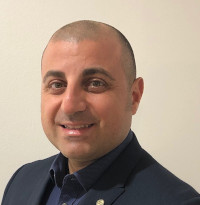
Whether it’s higher financial transparency, greater data security, smooth communication with physicians, or easy-to-access electronic medical records, there can be no doubt that patients’ expectations around healthcare are growing, writes JOSEPH BADAOUI.

But today, meeting these requirements takes more than good healthcare clinicians. According to the Australian Digital Health Agency, digital information is the key, and provides “the bedrock of high-quality healthcare”.
In order to keep up with increasing healthcare demands, many leaders in the industry are turning to technology to both foster innovation and to support high-quality, sustainable healthcare for all.
Across Australia the foundations for a safe, seamless and secure health system are being laid through transformation initiatives. The benefits of digital transformation in healthcare are significant and compelling: hospital admissions avoided, fewer adverse drug events, reduced duplication of tests, better coordination of care for people with chronic and complex conditions, and better-informed treatment decisions.
The role of interconnectivity
Interconnectivity in particular, has become critical to modern medicine. It facilitates collaboration between many entities across vast networks and is changing the way organisations exchange and process data. The rate at which data is exchanged between IoT devices, record systems and practitioners can, quite literally, be a matter of life or death. So, it’s no wonder why.
When carefully managed and optimised within a broader ecosystem, interconnectivity holds the potential to truly support the demands of patients, whilst delivering efficiencies and improvements to healthcare providers.
There are several areas in which interconnectivity can have positive effect:
- Interconnectivity has the power to create strong workflows across all systems, platforms and tools in the healthcare industry by ensuring data travels via secure pathways within a distributed network architecture. Instead of data moving from one central location to different outposts, it can be held where it’s needed and processed on demand, for example by front-line health workers. High network speeds and bandwidth are necessary to achieving strong workflows with patient data at their core and will help deliver care without compromising patient outcomes.
- Healthcare data is highly sensitive and personal, which means security and compliance are top of mind for both healthcare and technology providers. According to the latest OAIC report, health service providers have consistently been amongst the top sectors reporting a data breach or loss. In part, this could be due to the growing interconnectivity between medical devices, health IT, electronic health records (EHRs) and patient access to data, all of which invite vulnerability. Secure connections, through authentication and manual penetration testing on software and hardware are instrumental in being able to pinpoint security breaches and attacker entry points.
- Interconnectivity has helped a number of industries save on operational expenditure, data storage and communication management. Not only has it facilitated digital solutions that reduce wasteful costs and behaviours, it has also enabled efficient workflows around patient registration, prescription management and data storage. Interconnection makes this possible by enabling; more seamless collaboration no matter where you are in the world, reducing downtime due to more network resiliency, and reduced latency on a distributed architecture.
- As healthcare continues to evolve and modernise, new challenges and opportunities will arise. With data being a catalyst for innovation, it is vital that healthcare providers get the basics right. Not only must they understand how to use and store their data, but how more importantly to access it to empower health workers and patients alike.
*Joseph Badaoui is a Senior Engineer with Digital Realty
Comment below to have your say on this story.
If you have a news story or tip-off, get in touch at editorial@governmentnews.com.au.
Sign up to the Government News newsletter